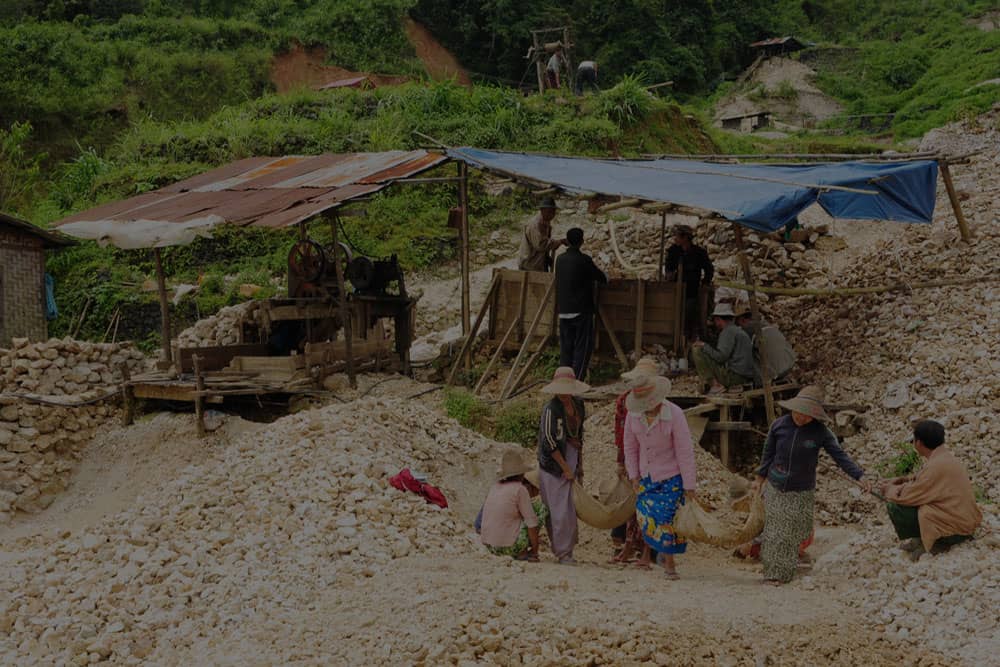Internal alignment and coordination on stakeholder engagement
A. Senior management buy-in: securing recognition and resources required for engaging constructively with communities
Good Practices
Internally develop a shared understanding of the value of stakeholder engagement.
- Ensure senior management understand the risks of not putting in place a long-term sustainable stakeholder engagement strategy (e.g. commercial risks, investor-related risks, reputational risks and legal risks). Translate human rights language into other concepts familiar to the company: the languages of business risk, of operational benefits, costs or of technical business processes. In particular, link human rights responsibilities to ESG (environmental, social and governance) criteria.24
- Present data about the costs of community conflicts (e.g. percentage of staff time invested in managing conflict, lost productivity due to delays).
- Provide case studies on the consequences of poor stakeholder engagement.
- Outline potential legal consequences, especially in light of global trends towards enhanced regulation and mandatory human rights due diligence legislation.
Promote greater involvement of senior management in social issues.
- Express a commitment to meaningful stakeholder engagement in corporate policy and make sure this is endorsed by senior leadership within the company (see Sensitive discussions on security and human rights: addressing issues constructively within Human rights concerns – Working with Host Governments).
- Create senior, cross-departmental decision-making platforms when operating in high-risk environments (see centralized data sharing to identify security and human rights risks).
- Establish a system that promotes the integration of stakeholder views into decision-making at the managerial level.
- Create opportunities for senior management to interact directly with communities, ensuring that company leaders are educated on how to engage in a culturally appropriate way. This is the best way for senior management to understand community concerns and security issues, as well as to make decisions that are mutually beneficial to the company and communities.
- Ensure potentially serious risks are escalated to senior-level management.
Integrate human rights compliance and social performance into the bonus structure and career progression for all staff, in particular for senior management.
- Develop key performance indicators related to community engagement and include these in the performance reviews of all managers.
- Ensure that work to establish good community relationships is rewarded through the payment and bonus systems of the company.
- Attach a code of conduct or similar policy for community engagement as an annex to employees’ contracts.
- Integrate community issues in company staff career paths by ensuring that all up-and-coming company leaders are assigned a job in the community relations department sometime in their career.
Key Resources
- Due Diligence Guidance for Meaningful Stakeholder Engagement (OECD 2017)
- Human Rights Due Diligence in High Risk Circumstances (Shift 2015)
- UN Guiding Principles Reporting Framework (Shift and Mazars 2015)
B. Coherent stakeholder engagement: avoiding conflicting policies and processes
Good Practices
Make stakeholder relations a collective responsibility.
- Develop a shared understanding of the value of stakeholder engagement (see senior management buy in: securing recognition and resources required for engaging constructively with communities within Internal alignment and coordination on stakeholder engagement – Working with Communities)
- Communicate the stakeholder engagement strategy internally. Every business unit needs to be aware of the strategy and understand why the company is committing time and resources to it.
- Provide training to all staff on human rights responsibilities, community relations issues, and related corporate policies and processes.
- Train new staff members on community issues. Include ‘dos and don’ts’ for staff and company behaviour and explain the types of services external relations staff can provide to support other departments.
- Train security officers to ensure that the company’s approach to security is based on inclusive decision-making and partnership, rather than seeing the communities as a source of risks.
- Involve technical teams and security personnel in dialogue with communities as a way to ensure that community concerns are properly addressed and incorporated into programme design and decision-making, as well as in security arrangements.
- Ensure that good community relationships are rewarded through the company’s payment and bonus systems (see senior management buy in: securing recognition and resources required for engaging constructively with communities within Internal alignment and coordination on stakeholder engagement – Working with Communities).
Promote alignment and coordination across the company in all decisions and activities that concern or impact stakeholders
(see senior management buy in: securing recognition and resources required for engaging constructively with communities within Internal alignment and coordination on stakeholder engagement – Working with Communities) and security contractors : ensuring compliance with company policies within Internal alignment and coordination on stakeholder engagement – Working with Communities).
- Review policies and processes throughout the company and integrate emerging stakeholder engagement good practice. Emphasise that effective stakeholder engagement can play a significant role in supporting effective respect for human rights and international humanitarian law.
- Ensure corporate policies meet the needs of specific operational context and respect national laws.
- Review potential legal, regulatory and contractual requirements for stakeholder engagement in close consultation with relevant departments (e.g. legal, public affairs, government affairs).
- Manage stakeholder engagement as a business function. According to the International Finance Corporation, companies should develop a single well-defined strategy for stakeholder engagement with ‘a clear set of objectives, timetable, budget, and allocation of responsibilities’ (see Navigating different stakeholders: avoiding inadvertently favouring or excluding sub-groups within communities within Stakeholder engagement strategy – Working with Communities).
- Identify critical points in the project lifecycle where stakeholder engagement will be needed. Determine who will carry out stakeholder consultations and how they can be integrated into core business functions.
- Ensure consistency in company communications to external stakeholders.
- Establish a system for recording and tracking information relevant to stakeholder engagement.
- Develop and maintain a register of company commitments. It should contain timeframes for action and assign responsibility to the appropriate individuals, business units and/or implementing third parties (which, in some cases, may be the contractor, an NGO or local government agency).
- Ensure that internal decision-making, budget allocations and oversight processes enable effective responses to current, emerging and future impacts. This should include the establishment of direct reporting lines to senior management (see Consultations conducted too late or not according to international standards: Facing a lack of social license to operate within Information-sharing, consultation and consent – Working with Communities). Consultations conducted too late or not according to international standards: Facing a lack of social license to operate [4.3.a]).
- Institute a human rights working group that oversees the day-to-day implementation of the human rights policy, including grievance mechanisms and a remedy system (see Community mistrust: ensuring an effective company grievance mechanism within Stakeholder engagement strategy – Working with Communities).
- Develop indicators in consultation with human rights experts. Shift explains that such consultation can ‘enable ongoing monitoring of human rights risks and of the effectiveness of business processes for identifying and managing those risks’.
- Hold routine ‘risk and opportunities’ analysis meetings between project managers, relevant experts (e.g. geologists and environmental engineers), community relations personnel and security personnel. On the basis of this process:
- Produce a crisis management plan and an emergency response plan.
- Build a systematic approach to integrate the findings of impact assessments and act upon them to prevent and mitigate negative impacts – see human rights due diligence).
- Ensure that those company departments that impact human rights are held accountable for their actions.
Give prominence to the community relations function.
- Transform the community relations function ‘from firefighter to internal service provider’. This means that the community relations function should not be reactive to issues and challenges, but should adopt a more proactive role and resolve issues before they arise. Organise meetings where community relations managers explain their work and the types of assistance they can provide to each department.
- Develop a policy to ensure that all new projects are subject to human rights due diligence and reviewed by the community relations department before they can be implemented.
- Develop coordination procedures between the company’s community relations department and the security department, with the community relations department as the focal point for any interactions with local communities.
- Ensure that the community relations team is constantly kept appraised of any company security assessments and is involved in the design of new security measures, particularly if the latter are likely to have an impact on communities.
- Ensure the community relations team engages with communities to explain security arrangements and the company’s human rights policies, as well as how to report any cases of security-related concerns or grievances (see Information Management: determining what to share in relation to security arrangements within Information -sharing, consultation and consent – Working with Communities).
- Establish community liaison offices and ensure liaison officers are known and available to the community. The community relations team should include a mix of locals and non-locals, since sometimes community members may prefer to talk to an ‘outsider’.
- Involve communities in the selection of local liaison officers.
- Sponsor training on cultural understanding, dialogue and mediation skills for community liaison officers.
- The International Finance Corporation recommends that companies ensure community liaison officers ‘have the authority to negotiate on behalf of the company. This requires a clear reporting structure and clarification as to which decisions they can take unilaterally, and which are to be passed on to higher levels within the company’.
- Require liaison officers to report all relevant information back to the company.
- Ensure the community relations budget is realistic. Establish a budget that covers at least the basic systems and protocols. As explained in this may include ‘a local content policy, a community-monitoring mechanism, regular (quarterly) public meetings in communities, an effective grievance procedure, etc.’
Practical Tools
- Human Rights Due Diligence in High Risk Circumstances (Shift 2015)
- Getting It Right: Making Corporate-Community Relations Work (Luc Zandvliet and Mary B Anderson, Greenleaf Publishing 2009)
C. Security contractors: ensuring compliance with company policies
Good Practices
Consider security contractors’ roles and activities as part of the company’s risk and impact assessments
(see Unidentified root causes, unaddressed impacts of the operation or unfulfilled commitments: addressing persistent tensions within Stakeholder engagement strategy – Working with Communities).
In the request for proposals (RfP), include award criteria related to the private security provider and their security officers as set out in Selecting private security providers: assessing quality and cost considerations within Bids and contracts – Working with Private Security Providers.
- Award criteria related to the security provider may include:
- Internal policies (codes of conduct).
- Knowledge of national and international laws, in particular human rights law and international humanitarian law.
- Possession of all necessary business licenses.
- Fair renumeration, working conditions and social benefits.
- Adequate internal control systems capable of ensuring ethical conduct (e.g. grievance mechanisms).
- Award criteria related to security personnel may include:
- Records of past conduct.
- Training.
- Records of possession of all necessary permits related to equipment and small arms and light weapons, if relevant and permitted by relevant national laws.
Practical Tools
- A Guidance Tool for Contracting Private Military and Security Services, sections 1.3 and 1.4 (Geneva Centre for Security Sector Governance 2017)
- Recommendations for Hiring Private Security Providers (SociosPerú, PeaceNexus, International Committee of the Red Cross and Geneva Centre for Security Sector Governance 2015)
Consider the set of criteria laid out in section Selecting private security providers: assessing quality and cost considerations within Bids and contracts – Working with Private Security Providers). For the evaluation of proposals and ensure the community relations team participates in this process.
- Ensure that contractors’ financial proposals include a sufficient budget for community engagement, impact management and other activities that are part of the contractors’ responsibilities. This will help to ensure that contractors do not cut corners in social performance as way to reduce expenses once tenders have been awarded.26
Develop a binding contract with each contractor that includes clear clauses on human rights and international humanitarian law
(see Compliance with international standards and good practices: developing implementation guidance within Bids and contracts – Working with Private Security Providers).
- These clauses should cover:
- Respect for national laws, international humanitarian law and human rights law.
- Company human rights standards and policies, including the Voluntary Principles on Security and Human Rights and the International Code of Conduct for Private Security Providers.
- Performance requirements on stakeholder engagement.
- Clarity on the company and contractor’s respective roles and responsibilities, including the contractor’s shared responsibility for dispute resolution with local communities when they have contributed to tensions.
Develop a coherent stakeholder engagement strategy that considers the role of contractors
(see Navigating different stakeholders: avoiding inadvertently favouring or excluding sub-groups within communities within Stakeholder engagement strategy –Working with Communities).
- Speak with one voice to the local communities, ensuring consistency in messages.
- Agree on a procedure for managing community grievances that avoids confusion between the role of the project proponent and the main contractors.28 Where appropriate, integrate the contractor’s grievance mechanism into existing mechanisms. However, there may be instances in which the contractor should have its own functioning grievance mechanism, especially when it prominently interacts with the local community (see 4.2.e.).
- Inform local communities about the details of contracts with local contractors, explaining their roles and responsibilities, as well as how to report any security-related grievances.
Offer support to contractors to enhance their capacity to deliver services in compliance with company standards.
- Train contractors so that they have the adequate knowledge and skills to operate in accordance with effective security and community engagement practices.
- Share best practices and guidelines, as well as information identified in risk and impact assessments. Explain their relevance and how contractors can use this knowledge in practical, actionable terms.
Monitor contractors’ implementation of social commitments in accordance with the contract.
- Designate a company representative who is responsible for monitoring and ensuring contractors’ compliance with agreed requirements, including social commitments.
- Hold regular meetings with the contractor to discuss community relations and consider inviting community representatives to participate in these meetings. Be aware that community members may not always feel comfortable publicly sharing their concerns, particularly with security providers present. Discuss community concerns raised through any grievance mechanisms, with care to avoid disclosing any information that might reveal the identity of complainants.
- Agree on systematic and regular reporting requirements.
- Ensure clarity on procedures for managing community grievances in order to avoid confusion between the role of the company and that of the contractor. The company can either integrate the contractor’s grievance mechanism into existing mechanisms or, if more appropriate, indicate that the contractor has its own functioning grievance mechanism (especially when it prominently interacts with the community) (see 4.2.e.).
- Inform local communities about the details of contracts with local contractors, explaining their roles and responsibilities, as well as how to report any security-related grievances.
If contractors fail to comply with clauses in the contract, consider the following options:
- Negotiate a timeline for compliance.
- Withhold payments as established in the contract until the issue is satisfactorily addressed.
- Condition an ongoing relationship on performance and provide further, detailed guidance and training, together with regular performance review.
- Terminate the relationship with noncompliant contractors.




